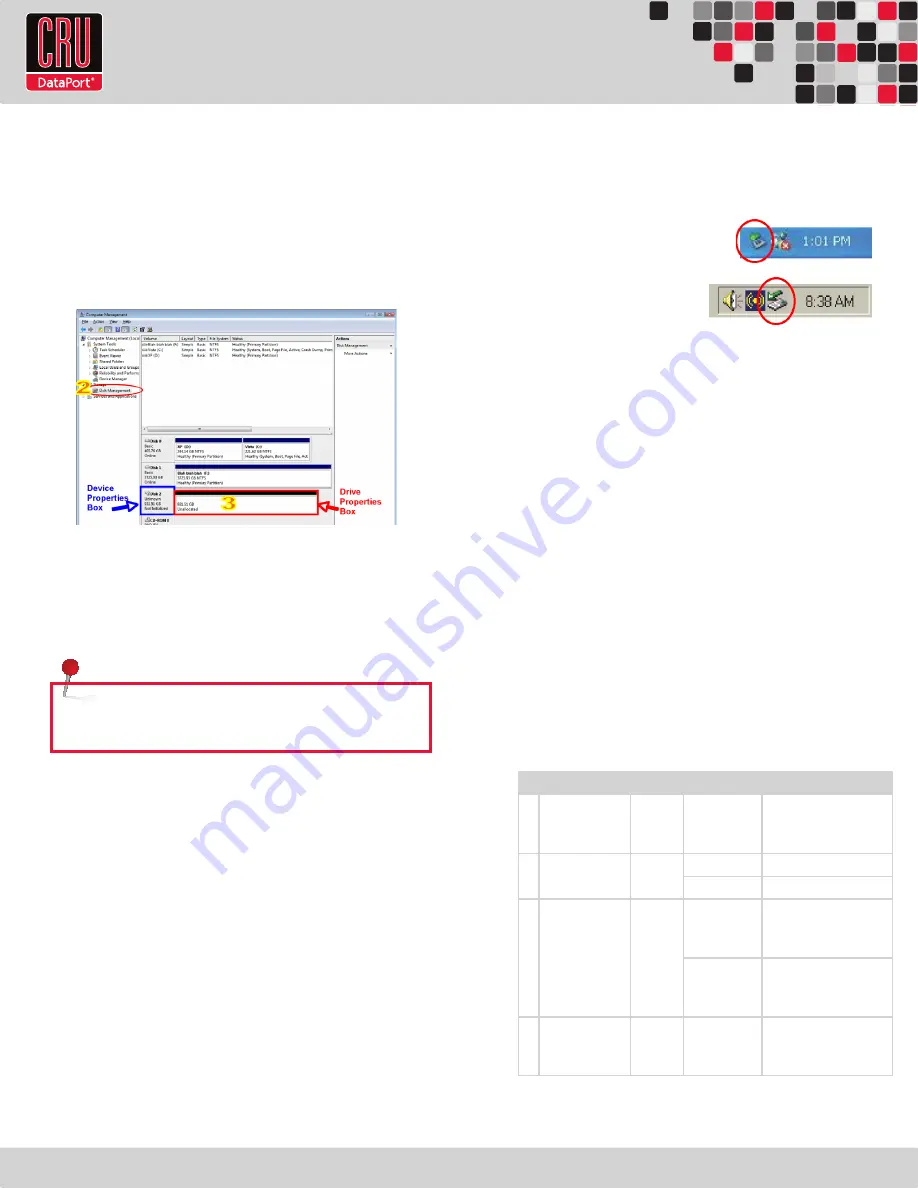
RTX220 QR - Manual
b. In the left pane of this window, left-click on Disk Management.
c. The drive should appear in the list of Disks in the lower middle/
right pane (see picture below). You may need to scroll down to
see it. If the drive is already formatted, you can identify it easily
by its volume name. If it’s unformatted, the Drive Properties Box
will say “Unallocated” and you’ll need to initialize the disk be
-
fore formatting it. Initialize the disk by right-clicking the Device
Properties Box and selecting Initialize Disk.
d. To format the drive, right-click the Drive Properties Box and
select Format.
e. If you are prompted to select a partition type, select MBR for
volumes 2TB or smaller, or GPT for volumes larger than 2TB.
f. Click through several more windows, leaving the default set
-
tings, until you see a window that allows selection of a file
system. Choose NTFS and enter a name for the new volume.
Be sure to check the box labeled “Perform a quick format”
unless you want to completely erase any data on the drive
and have time to wait. A quick format should take less than a
minute, while standard formatting may take several hours.
g. Click “Next” and then “Finish” to start the format process.
When the format is complete, the Drive Properties Box will
update to show the new volume name. The new volume can
now be found in My Computer.
3.2.3 Mounting and Unmounting Volumes
If the hard drive installed in the DataPort 10 Secure was previously
formatted with the correct Security Key inserted into the Mini-USB
Security Key Port on the face of the receiving frame, then when the
DataPort 10 Secure is properly connected and turned on, a window
may open to allow you access to the volume. If no window appears,
you can find the volume by double-clicking the “My Computer” icon.
Unmount the DataPort 10 Secure before powering it down by single-
clicking the green arrow icon on the task bar (in Windows XP) or the
USB plug icon with the green check
-
mark on the taskbar (Windows Vista
and Windows 7), then selecting “Safely
remove….” Windows will indicate
when it is safe to disconnect the
DataPort 10 Secure. Disconnecting
the unit without first ejecting it
can result in data loss.
4. Encryption
• The DataPort 10 Secure uses full disk hardware encryption to
encrypt the entire contents of the drive - including the boot
sector, operating system and all files - without performance
degradation.
• The encryption key must be installed prior to powering on the
DataPort 10 Secure for the data to be decrypted on the drive. If
the key is externally connected to the Mini-USB Security Key Port
and is not internally installed, then once it has been accepted,
it may be removed and stored apart from the data so that in the
event that the drive is lost or stolen, the data is protected.
• When a drive is formatted using an encryption key, the same
or a duplicate key must be used in order to access the data.
There is no “back door” to access the data; lost keys make data
recovery virtually impossible.
5. Frequently Asked Questions (FAQ)
Q: What do the LED lights indicate?
A:
Page 4
# LED Name
Color
State
Description
1
Drive Activity
Amber Intermittent
Flashes when
the drive is being
accessed.
2
Power
Green
Solid
Unit is powered on.
Flashing
Fan Failure.
3
Key Error
Red
Solid
Encryption engine
error. Contact
Technical Support.
Flashing
The Security Key is
not present or is not
functioning.
4 Encryption
Green
Solid
The Security Key
is present and
encryption is enabled.
NOTE:
Windows XP does not support GPT or volumes larger
than 2TB.

























